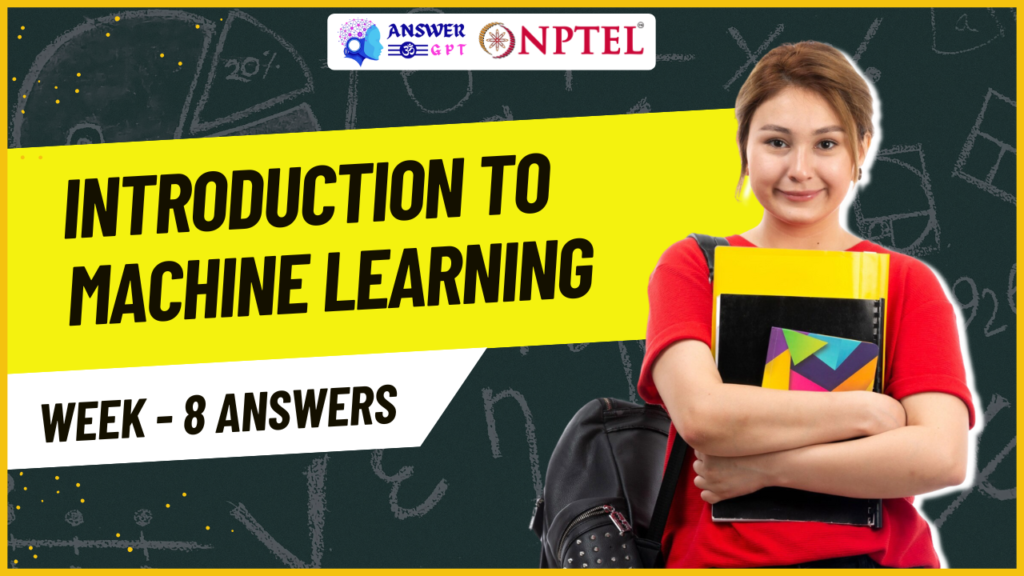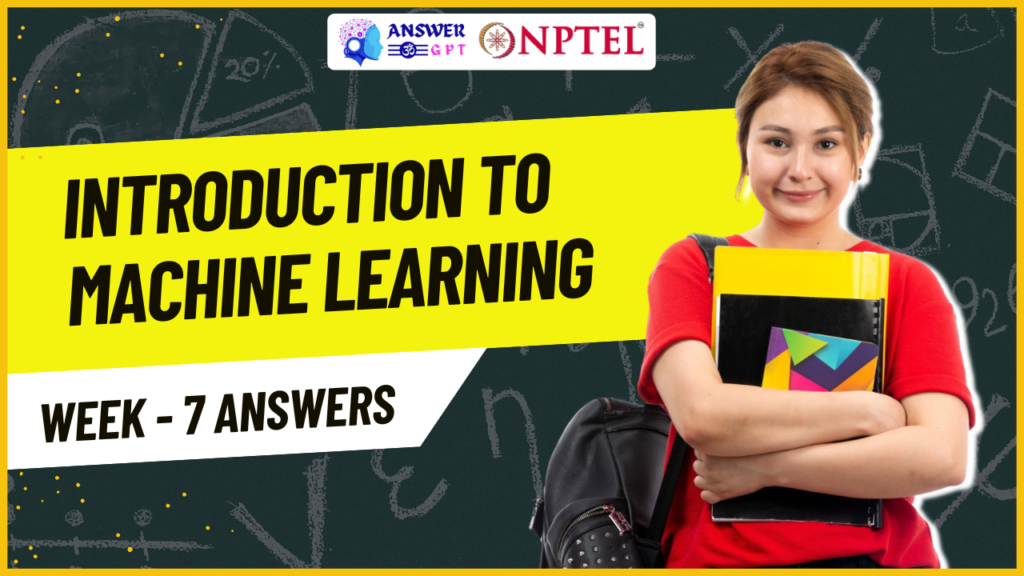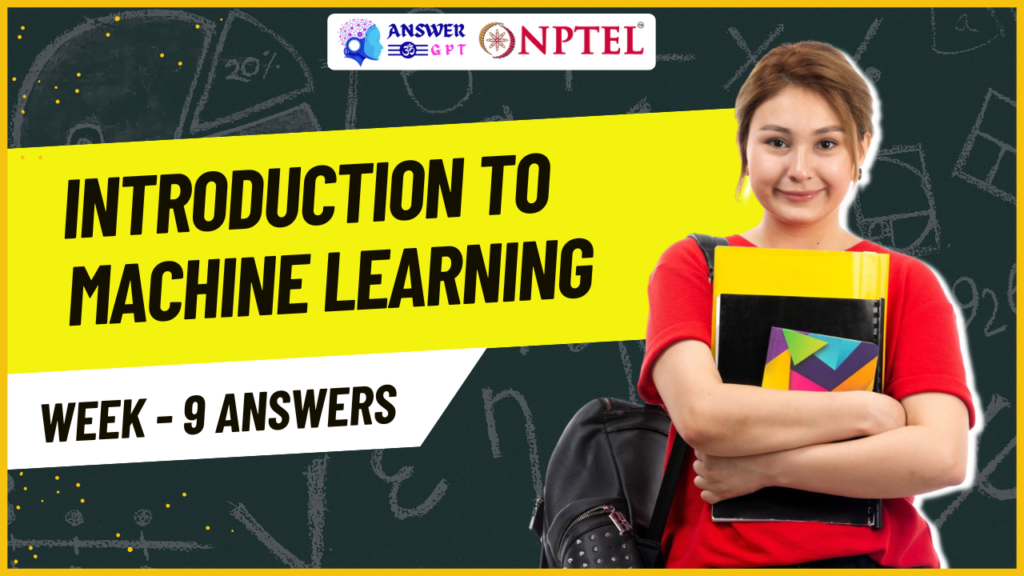Get NPTEL Machine Learning Week 8 answers at nptel.answergpt.in. Our expert-verified solutions help you understand key concepts, simplify complex topics and enhance your assignment performance with accuracy and confidence.
📌 Subject: Machine Learning
📌 Week: 8
📌 Session: NPTEL 2025
📌 Course Link: NPTEL Machine Learning
📌 Reliability: Expert-reviewed answers
We recommend using these answers as a reference to verify your solutions. For complete, detailed solutions for all weeks, visit – [Week 1-12] NPTEL Introduction to Machine Learning Assignment Answers 2025.
🚀 Stay ahead in your NPTEL journey with updated solutions every week!
| Week-by-Week NPTEL Machine Learning Assignments in One Place |
|---|
| Machine Learning Week 1 Answers |
| Machine Learning Week 2 Answers |
| Machine Learning Week 3 Answers |
| Machine Learning Week 4 Answers |
| Machine Learning Week 5 Answers |
| Machine Learning Week 6 Answers |
| Machine Learning Week 7 Answers |
| Machine Learning Week 8 Answers |
| Machine Learning Week 9 Answers |
| Machine Learning Week 10 Answers |
| Machine Learning Week 11 Answers |
| Machine Learning Week 12 Answers |
Introduction to Machine Learning Week 8 NPTEL Assignment Answers 2025
1. In Bagging technique, the reduction of variance is maximum if:
- The correlation between the classifiers is minimum
- Does not depend on the correlation between the classifiers
- Similar features are used in all classifiers
- The number of classifiers in the ensemble is minimized
Answer :- a
2. If using squared error loss in gradient boosting for a regression problem, what does the gradient correspond to?
- The absolute error
- The log-likelihood
- The residual error
- The exponential loss
Answer :- c
3. In a random forest, if T (number of features considered at each split) is set equal to P (total number of features), how does this compare to standard bagging with decision trees?
- It’s exactly the same as standard bagging
- It will always perform better than standard bagging
- It will always perform worse than standard bagging
- Can not be determined
Answer :- a
4. Multiple Correct: Consider the following graphical model, which of the following are true about the model? (multiple options may be correct)

- d is independent of b when c is known
- a is independent of c when e is known
- a is independent of b when e is known
- a is independent of b when c is known
Answer :- a, d
5. Consider the Bayesian network given in the previous question. Let “a”, “b”, “c”, “d” and “e” denote the random variables shown in the network. Which of the following can be inferred from the network structure?
- “a” causes “d”
- “e” causes “d”
- Both (a) and (b) are correct
- None of the above
Answer :- d
6. A single box is randomly selected from a set of three. Two pens are then drawn from this container. These pens happen to be blue and green colored. What is the probability that the chosen box was Box A?

- 37/18
- 15/56
- 18/37
- 56/15
Answer :- c
7. State True or False: The primary advantage of the tournament approach in multiclass classification is its effectiveness even when using weak classifiers.
- True
- False
Answer :- b
8. A data scientist is using a Naive Bayes classifier to categorize emails as either “spam” or “not spam”. The features used for classification include:
- Number of recipients (To, Cc, Bcc)
- Presence of “spam” keywords (e.g., ”URGENT”, ”offer”, ”free”)
- Time of day the email was sent
- Length of the email in words
Which of the following scenarios, if true, is most likely to violate the key assumptions of Naive Bayes and potentially impact its performance?
- The length of the email follows a non-Gaussian distribution
- The time of day is discretized into categories (morning, afternoon, evening, night)
- The proportion of spam emails in the training data is lower than in real-world email traffic
- There’s a strong correlation between the presence of the word ”free” and the length of the email
Answer :- d
9. Consider the two statements:
Statement 1: Bayesian Networks are inherently structured as Directed Acyclic Graphs (DAGs).
Statement 2: Each node in a bayesian network represents a random variable, and each edge represents conditional dependence.
Which of these are true?
- Both the statements are True.
- Statement 1 is true, and statement 2 is false.
- Statement 1 is false, and statement 2 is true.
- Both the statements are false.
Answer :- a
Conclusion:
In this article, we have uploaded the Introduction to Machine Learning Week 8 NPTEL Assignment Answers 2025. These expert-verified solutions are designed to help you understand key concepts, simplify complex topics, and enhance your assignment performance. Stay tuned for weekly updates and visit www.answergpt.in for the most accurate and detailed solutions.


